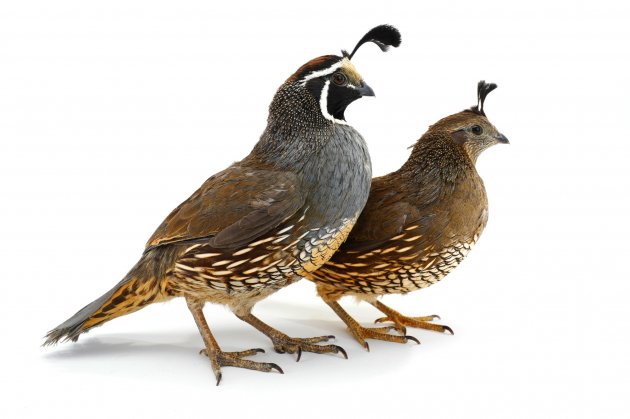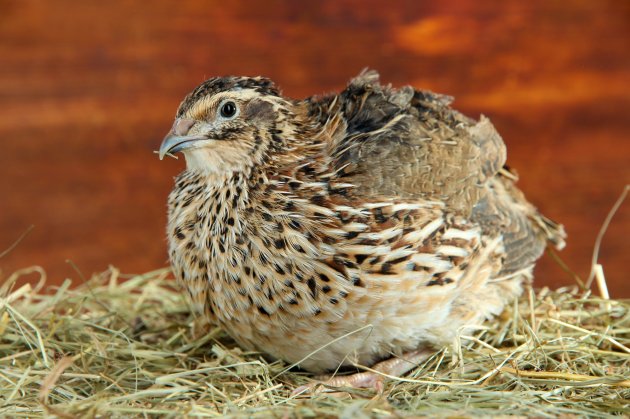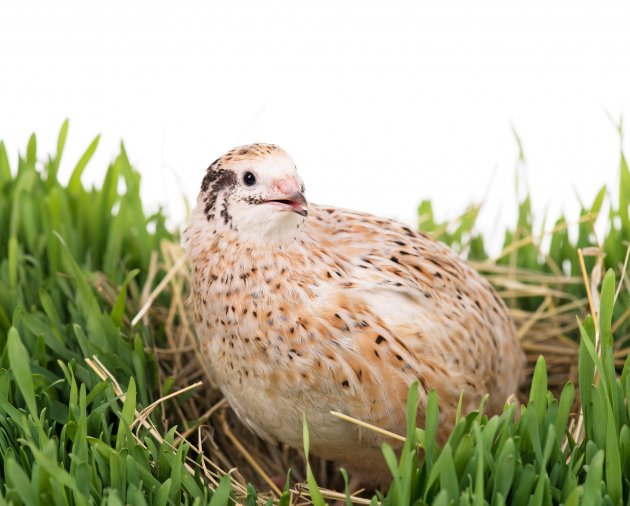People keep all sorts of birds and animals as pets; the quail is no exception. Many Asian regions raise these hearty, pear-shaped birds for their meat and their eggs. However, for those searching for a unique pet with many pleasing qualities, the quail may be a perfect choice.
There are 20 different wild quail species and 70 domesticated varieties; however, out of those only a few are kept as pets. Coturnix quail are a large breed that is usually used in the food industry, while the Bobwhites quail (albeit a beautiful bird) tends to be more aggressive. Another quail that may be kept as a pet is Gambel's quail. This bird has a teardrop-shaped topknot on its head but is not recommended for novice quail owners due to their nervous tendencies and quick-to-flight personalities.

Another quail that has made its way into the pet trade is the one most commonly kept; the Button Quail (Chinese Painted Quail).
Let’s explore the ins-and-outs of keeping this uniquely beautiful bird.
The Button Quail Appearance
The Button Quail is the smallest of the species measuring in at just four inches long. Their pear-shaped bodies come in a variety of colors including blue, brown, silver, grey, and white and with multi-colors and patterns. Like most birds, males are more colorful than females. The male of this species has white feathers under their beaks and on their upper chest, with two black bands, referred to as a “bib.” Males also sport a red underbelly with a bluish-hue. Both males and females have orange feet.
This species of quail can live up to 13 years with optimal care.
Quail Behavior
The Button Quail is a ground-dweller, with feet made for walking, not perching. They are docile but somewhat "chatty," and do well with pigeons, budgies, finches, canaries, and small docile parrots.
This species of quail is a goofy little bird with a charming personality - pet parents rave about their constant antics; however, they are not overly intelligent.
Although it may take some time to tame the Button Quail, once done they enjoy being stroked under the chin, but not cuddled. They can run quite quickly and when resting you can find them huddled together in a corner.
Never keep a lone quail, as these birds are very social. The best combination is one male for two females - males can be combative with one another, especially during the breeding season.
Button Quails can also be very noisy and make a variety of chirping, twilling, and even crowing sounds.

Housing a Quail
Since the Button Quail is a bottom-dweller, your aviary should be longer than it is taller with a solid (not wire) floor. For two quail, the habitat should measure at least 6.5 feet long by 5 feet wide and made from a mouse-proof wire with 0.27-inch gaps.
If housing outdoors, at least half of the roof needs to be made from a solid waterproof material. Provide your quails with at least one solid wall for added protection. You will also want double doors, so they don't escape as you enter into the habitat.
Additional Aviary Accessories
- Wooden crates or polystyrene boxes with holes in the back for lounging
- Hollow logs or pipes for hiding
- Dried branches
- Potted plants or potted grasses
- Shallow dish with dusting powder to bathe in
Feeding a Quail
Button Quails feed on both insects and plants. For the pet Button Quail feed it a high-quality game birdseed mix or finch mix. Supplement its diet with dark leafy greens like kale and spinach, small bits of apple and the occasional cricket or mealworm. If your birds are housed outside, they will catch their own insects. You will also want to provide your quail with grit and calcium found at pet retailers.
Since the Button Quail is a ground-forager, they will scratch at the bottom of the enclosure in search of food. However, you can avoid the scattering of the food by using a deep heavy dish.
Use a shallow dish for fresh water, and if you have chicks in the aviary, be sure to add smooth pebbles at the bottom of it to prevent them from drowning.

Handling a Quail
Depending on when you adopted your Button Quail will determine how much handling it will allow. Older quails that have not had a lot of human contact may never allow you to touch them.
Always handle quail very carefully. If you are able to pick up your quail, do so by cupping and cradling its body with just enough pressure to keep it safe.
Fun Quail Facts
- Button Quail babies are about the size of a bumblebee when hatched.
- Quail can fly but only do so when necessary.
- Some quail species have teardrop-shaped "topknots" on their heads.
- Quails originated in North America
- Dust baths help rid the quail of parasites.
- A group of quails is called a bevy, a flock, a queer, or a covey
- The quail's song has beats and harmonies and sounds like "wet-my-lips."
- Quails were kept for their beautiful songs in 11th century Japan.
- The female quail can lay up to 12 eggs, but the average is six.
The Quail & You
If you think the Button Quail would make the perfect addition to your home or outdoor aviary, then be sure to find a reputable breeder to adopt one from. Never take a quail from the wild as this can be devastating to the bird. Once you have your quail at home, follow our helpful tips to keep your new feathered friend happy and healthy.
Further reading and resources:
- Jodi McDonald. (2010).A Closer Look at "Button Quail"
- HBW Alive. Family Buttonquails (Turnicidae)
- Backyard Chickens. Quail Breeds and How To Pick The Right Bird For You